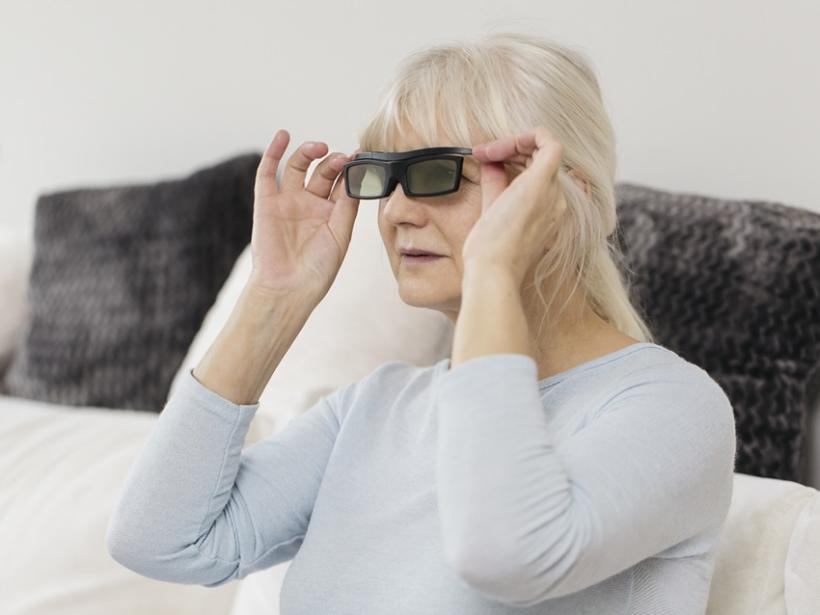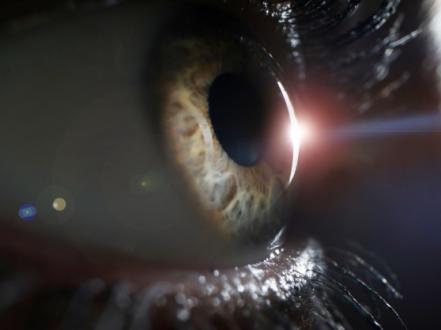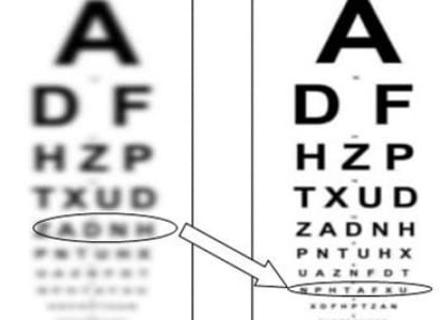A pillar of our everyday existence, our vision shapes everything including our quality of life and our capacity to negotiate the planet. Though most people take eye health for granted until problems develop, preserving both personal and public well-being depends on knowledge of prevalent eye disorders that could cause vision loss. Understanding these disorders helps you not only protect your own sight but also help those around you to be more generally healthy.
Understanding eye illnesses including glaucoma, macular degeneration, diabetic retinopathy, cataracts, retinitis pigmentosa, and uveitis equips you to take aggressive efforts in prevention and early intervention. Preserving eyesight depends on being alert enough to schedule frequent eye exams, seeing early warning symptoms of eye diseases that cause blindness, and seeking quick treatment.
Furthermore, distributing this knowledge within your neighborhood aids in the development of a vigilant and supporting system. Those who have an education are more likely to inspire loved ones to schedule eye exams and change their lifestyle to improve their eye condition. Basically, knowing these major diseases improves not only your personal health but also helps family, friends, and neighbors to have a culture of health and preventive treatment.
The top six eye diseases that significantly increase blindness risk will be discussed in this article along with information on their origins, symptoms, and most recent therapies. Equipping yourself with this information will help you to be proactive toward improved health and a more educated, supporting community.
Negotiating Life Blindly: Typical Situations and Difficulties
Whether partial or full, blindness greatly influences the everyday lives of those impacted. Knowing the primary forms of it can assist one in better appreciating the many ways it could change a person's environment. These are some possible life situations that highlight how it could affect many spheres of existence.
Imagine a young professional with a degenerative eye disease losing their vision. This abrupt shift calls for them to modify their professional plans and choose new abilities. They may have to learn how to operate with tactile input instead of visual clues or master assistive technology, for example. Their path includes not just negotiating the demands of their line of work but also learning to interact with their surroundings differently.
Imagine a retiree whose extensive cataracts progressively cause visual loss. At first, individuals could find it difficult with simple chores like reading or recognizing faces. Their disease may make it difficult for them to securely navigate their house or enjoy past interests like painting or gardening as it advances. Their independence and emotional well-being may suffer from this slow shift in eyesight.
A parent with diabetic retinopathy might have particular difficulties. Their eyesight is failing, therefore they might have to develop fresh approaches to run everyday activities and routines with their youngsters. This might include seeking outside assistance with formerly simple chores or educating their children about navigating the world with vision disabilities.
Every one of these situations emphasizes how blindness—in all its forms—can affect many spheres of life, from personal connections to daily routines. Knowing these difficulties helps one to develop empathy and support for those impacted as well as inspire ideas to improve their quality of life.
What Eye Diseases Can Cause Blindness?
A major public health issue is eye illnesses as many, if not recognized and treated quickly, result in permanent vision loss. Early identification and good care depend on an awareness of eye diseases that cause blindness. Among the most often occurring eye illnesses that could cause vision loss are:
Glaucoma: Frequently referred to as the "silent thief of sight, glaucoma usually starts slowly and frequently without symptoms until major damage is done. It causes rising eye pressure, which may harm the optic nerve. The most often occurring kind is open-angle glaucoma, which may cause peripheral vision loss and finally total blindness. Early discovery depends on routine eye examinations, particularly for those with risk factors including advanced age or family history.
Macular Degeneration: The next disorder known as age-related macular degeneration damages the macula, the central part of the retina, therefore causing impaired or lost vision in the center of the visual field. Two varieties are dry and wet ones. While the wet type may cause fast vision loss owing to aberrant blood vessel formation, the dry form is more prevalent and moves slowly. This disorder may greatly affect everyday tasks like facial recognition or reading.
Diabetic Retinopathy: It is a consequence of diabetes wherein elevated blood sugar levels damage the blood vessels in the retina. It moves through many phases, from moderate non-proliferative alterations to severe proliferative diabetic retinopathy, in which aberrant new blood vessel development occurs. This condition may seriously impair vision. For diabetics to monitor and control their eye condition, regular eye exams are very essential.
Cataracts: The clouding of the eye's natural lens defines cataracts. The condition causes impaired vision, glare, and night-time trouble seeing. Commonly developing with age, it may be worse by things like diabetes, smoking, and plenty of sun. Although cataracts may be surgically corrected, if untreated can cause major sight loss and blindness.
Retinitis Pigmentosa: The uncommon hereditary condition known as retinitis pigmentosa causes night blindness and peripheral vision loss by progressively degrading the photoreceptor cells of the retina. People may have tunnel vision and finally total visual loss as the illness develops. For people impacted as well as their families, early diagnosis and genetic counseling might be beneficial.
Uveitis: Trauma, infections, or autoimmune disorders may all cause uveitis—inflammation of the central layer of the eye. Ignorance of quick treatment may lead to problems such as cataracts, glaucoma, and retinal degeneration all of which can cause visual loss.
Promoting awareness, supporting people at risk, and motivating preventative action all depend on a knowledge of these eye illnesses. Early intervention and frequent eye tests may significantly help to maintain eyesight and improve quality of life.
Rarest Eye Disease: Definition and Characteristics
Among the many eye illnesses that might compromise vision, some are very uncommon and provide special difficulties for diagnosis and treatment. Although many disorders are very well-known, certain uncommon eye illnesses stand out because of their great complexity and frequency. Knowing rare eye conditions not only underlines the amazing variety of eye illnesses but also the need for continuous study and awareness.
One such disease, often known as Best Vitelliform Macular Dystrophy, is a rare hereditary condition mostly affecting the macula, the center component of the retina in charge of clear, central vision. Usually showing in early life, this disorder is brought on by mutations in the BEST1 gene. Many times, patients have an increasing loss of central vision, which may affect driving and reading. Though uncommon, the Best illness is of special interest because of its unusual appearance and the difficulties it presents for genetic counseling and possible future therapeutics.
Usually starting in youth or early adulthood, the hereditary type of macular degeneration known as Stargardt disease is characterized by the macula accumulating harmful chemicals that cause increasing visual loss. Though rare, Stargardt's illness is noted for its early start and the major effects it may have on young people on their capacity to do daily chores and pursue certain professions. Investigating this disorder mostly focuses on possible gene therapies and other creative approaches.
Leber congenital amaurosis (LCA) is a collection of uncommon hereditary retinal degenerations either at birth or early life. One of the most severe kinds of retinal dystrophy, it causes great visual loss from a quite early age. Mutations in many genes lead to this disorder, which causes afflicted people to commonly have trouble perceiving light or identifying things. Research on gene therapy and other sophisticated therapeutic approaches focuses especially on LCA because of its early start and severity as well as rarity.
Though mostly a skin condition, Harlequin Ichthyosis may have major eye effects. Severe skin thickness and irregularities brought on by this uncommon genetic disorder might impact the eyes, therefore compromising eyesight. Together with its systemic consequences, the rareness of this illness creates special difficulties for both patients and doctors. Usually, treatment consists of controlling the symptoms and problems related to the skin and ocular manifestations.
An exceedingly uncommon hereditary disorder marked by a lack of pigment in the eyes, ocular albinism causes vision difficulties including lowered visual acuity and sensitivity to light. Unlike other types of albinism, ocular albinism only affects the eyes—not the hair or skin. To solve the visual problems and guarantee the best visual performance, this unusual disorder calls for specific treatment.
Each of these uncommon eye illnesses emphasizes the amazing variety of disorders that could compromise eyesight. Raising knowledge of these uncommon diseases and funding studies into them can help to enhance diagnosis, treatment choices, and general quality of life for those afflicted.
Which Eye Disease is Never Cured?
Among the many eye disorders that affect vision, Retinitis Pigmentosa (RP) is one for which no clear treatment is available right now. Affecting the photoreceptor cells of the retina, this uncommon genetic condition causes a spectrum of related problems including increasing eyesight loss. RP is an illness that profoundly alters life without providing a definitive solution, even though research is continuous and therapies seek to control symptoms and slow down development.
Retinitis Pigmentedosa: What is it?
A collection of hereditary diseases, retinitis pigmentosa is characterized by the slow degradation of the retina, the light-sensitive tissue at the rear of the eye. The disorder mostly affects the rods and cones, which respectively are the cells in charge of vision in low light and color vision. People suffer from night blindness, tunnel vision, and finally central vision loss as these cells die. Although RP may proceed somewhat differently, usually over time it causes severe visual loss.
Real-world Situations and Difficulties
Imagine a young artist whose peripheral vision and night vision start to suffer. The artist finds it more difficult to participate in their artistic work—which demands thorough visual tasks and regular nighttime activities—as their RP develops. The artist must constantly change their life and work in spite of adjusting their methods and depending on assistive technology as RP's unrelenting progress calls for both emotional and pragmatic challenges.
In another case, an energetic retiree who loves travel and outdoor pursuits might find their way of life quite different as RP develops. The slow loss of eyesight calls for changes to their trip plans and leisure activities, including depending on friends' or family's help or utilizing certain tools. One might become frustrated and emotionally strained by not being able to fully participate in formerly loved hobbies.
Why RP Is Important
Retinitis Pigmentosa emphasizes the great necessity of constant research and assistance. Although there is no cure, developments in retinal implants, gene therapy, and other therapies provide promise for further advances. The situation reminds us poignantly of the difficulties experienced by those with chronic, incurable illnesses and the need for ongoing medical scientific advancement.
Staying current and participating in the most recent studies may be empowering for those living with RP. Quality of life may be much improved by means of support networks, adaptive technology, and proactive condition management strategy. Driving development and making sure those with RP get the assistance they need depends on awareness and advocacy.
Retinitis Pigmentosa is an incurable illness overall, yet it emphasizes the need for sensitivity, study, and creativity even in this regard. Understanding the significant influence of RP helps us to create a more encouraging atmosphere and helps in the continuous search for efficient treatments as well as a cure.
What are the Worst Eye Diseases?
When talking about serious and maybe fatal eye disorders, advanced glaucoma usually comes out as one of the toughest. Usually resulting from raised intraocular pressure, glaucoma is a collection of disorders that compromise the visual nerve. Although early intervention helps many types of glaucoma to be treatable, advanced glaucoma offers a particularly terrible situation wherein vision loss may become permanent, greatly changing a person's life.
What is Advanced Glaucoma?
Advanced glaucoma results from the illness moving to a stage when optic nerve damage is really severe. Severe occurrences of this impairment may also impact central vision; peripheral vision is lost in other situations. Often the consequence of fluid accumulation in the eye, is that higher intraocular pressure presses the optic nerve and causes slow degradation of it. Once severe glaucoma takes hold, the harm is usually permanent even with the many therapies accessible to control the condition.
Situations from Real Life and Difficulties
Consider an office worker who starts to have problems with their side vision over the years. They could first write off these problems as little irritations, but with time the peripheral vision loss becomes more noticeable. Once seemingly simple chores like negotiating congested areas or identifying individuals from a distance became more difficult. As they adjust to these new constraints, the person's social and professional life suffers; typically, their daily activities and workplace have to change.
Imagine a retiree who has always had a busy life with gardening and community service. Their capacity for these tasks reduces as advanced glaucoma advances. Reduced visual field and depth perception make simple pleasures—like caring for a garden or attending neighborhood events—challenging chores. Losing the capacity to completely participate in interests and social events may have a major emotional impact that affects the general quality of life.
The Importance of Advanced Glaucoma
Advanced glaucoma emphasizes the very important requirement of early diagnosis and treatment. The degree of the illness emphasizes the need for frequent eye examinations, especially for those at more risk, like as over 60 or those with a family history of the ailment. Once severe glaucoma has established, the emphasis moves to adaptive techniques and support even while medicines may help control intraocular pressure and delay development.
An Appeal to Consciousness
The severe effects of progressive glaucoma may be avoided mostly by early management and awareness. Understanding the great difficulties this illness presents will inspire people to provide regular eye checks top priority and support ongoing research and development first priority. Improved awareness not only promotes proactive eye health management but also stimulates the creation of creative therapies and support networks, therefore increasing the quality of life of those afflicted with advanced glaucoma.
Generally speaking, progressive glaucoma is one of the most serious eye diseases; thus, early identification and proactive treatment are rather important. By stressing the important influence of advanced glaucoma, we can raise awareness, advocate preventative actions, and assist continuous research to better handle this difficult condition.






